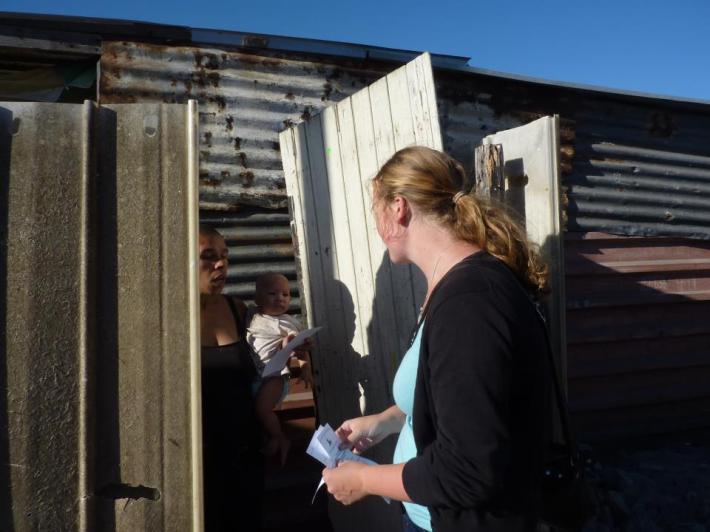South Africa calls its self the Rainbow Nation, referring to the range of skin colors found within the country. Despite its claim to a population of many hues, I found that this population divided its self along strict racial and cultural lines, with each racial category treated differently. Apartheid’s remnants were not far away.
In my experience South Africans in Capetown divided their world into three separate racial categories: black, colored and white. Note that colored, a derogatory word in the U.S., carries none of the connotations that it does in America. Colored refers to the Afrikaans speaking population descended from both slaves and white Dutch settlers.
I was lucky enough to get a little insight into the treatment and existence of each of these groups. I worked at one shelter in a suburb just south of Capetown that housed predominantly black South African women with children. The women had either been abused or were destitute. I spent the other half of my time working in Lavender Hill (see previous post) a colored community in the Cape Flats area. Under Apartheid black South Africans received the worst treatment of any racial group, with colored South Africans receiving only slightly better treatment. I listened to the stories of women in both organizations for which I worked and what stunned me was not only the treatment that these women received at the hands (usually the fists) of their partners but also the secondary abuse they suffered under the South African government.
In Lavender Hill and the shelter women told me about how the police wouldn’t come when they reported that their partner was hurting them. Social services wouldn’t follow up on cases and children could be left in shelters for months longer than they were supposed to be, or find themselves in abusive foster homes for years without social workers checking in on them. There was only one white woman that I interacted with in the shelter (telling in and of its self) and she told me that when she got kicked out of her boyfriend’s house social workers immediately found her a spot in the shelter and were very helpful.
I am not trying to say that all South African government employees or social workers are racist, but I am trying to point out the intense segregation and allotment of resources based on race that still occurs in South Africa 20 years after the end of apartheid. Many would say it’s hypocritical of an American to write this. My point is not that racism is a phenomenon unique to South Africa, but that being an outsider in South Africa allowed me to see what I have largely been blind to back home.
Working as a white woman and simply being a white woman in South Africa was an eye opening experience. I couldn’t ignore my race. Being white dictated how I was treated (or targeted), where I could move during daylight vs. at night, and the extent to which others felt comfortable trusting me, not trusting me, and confiding in me.
I leave South Africa with mixed feelings. I will remember fondly the many friends I made and the crazy times we had, but I have to admit that South Africa has lost much of the rosy glow that it attained in my imagination (and which it holds in many tourists imaginations). For me, Capetown is only partially the nightlife-crazy, foodie-loving, gorgeous city that many people think of. However, it’s also Lavender Hill graffitti and bullet holes and corregated tin huts and rampant drug use and subsequent abuse. It’s hungry kids whose parents spend child support money on drugs and women so depressed after gang rape that they’re suicidal. It’s difficult to reconcile these two worlds, but Capetown is yet another city in a pattern of places in the world that have stripped away my ability to live in ignorant, comfortable and often judgmental bliss. The world is far less beautiful than it appeared 6 months ago when I started this journey, but it is also more real and more understandable.
